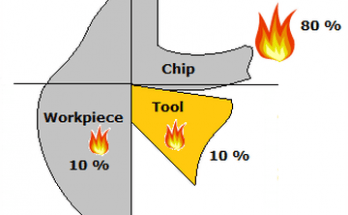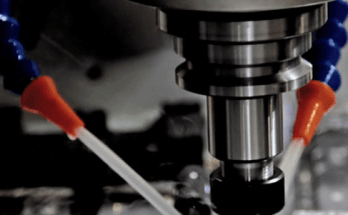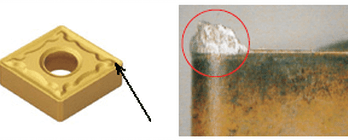CNC: 2D, 3D and 5-axis Milling – where are they used ?
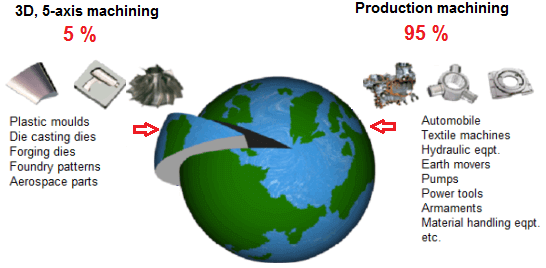
The vast majority of CNC machines worldwide (95 % or more) are used for 2D milling. This can be milling on vertical or horizontal machining centers.
The rest of the machines, 5 % or less, are used for 3D or 5-axis milling in tool rooms and aerospace companies. 3D milling is typically done on vertical machining centers, and 5-axis milling on 5-axis machining centers.
There is a common misconception that 2D miling is ‘low tech’ and 3D and 5-axis milling are ‘high tech’. The fact is that both are high tech (or low tech) in different ways.
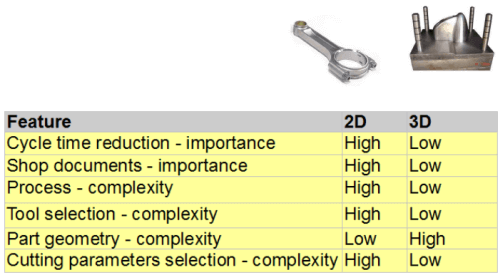
In 3D and 5-axis milling the part geometry comprises complex 3D surfaces. The variety of operations is small, process planning and tool selection are simple. In 2D milling the part geometry comprises simple holes and planes. The variety of operations is very large, process planning and tool selection are complex. The knowledge of machining operations, process planning and tooling required is actually far more in 2D milling.
Machine monitoring system on Industry 4.0,CAD/CAM software,CNC Program Simulation, CNC Training Software
Etc.
Pigging out on authentic Lebanese food in Bangalore
On a recent visit to Lebanon I fell in love with the food, and felt a craving for it a few weekends ago. I’d heard a lot about a restaurant called Byblos in Bangalore, and decided to land up there for dinner. I went there expecting to find food that was a distant relative of the original Lebanese, but it turned out to be totally authentic. I even saw a Lebanese chef hanging around (unless it was a Punjabi guy palming himself off as Lebanese – they look similar ).
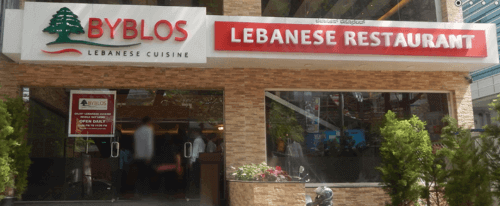
Lebanese food is an amalgam of Persian, Turkish, Greek and lately French influences. It’s very vegetarian friendly – there’s a big variety of dishes that are actually vegan because they have no dairy products. Most of them are sauteed in olive oil. There is a large variety of meat dishes too, and there is are a couple of types of bread that are like the Indian Roti. The Lebanese are as big consumers of sweets as Indians, and the sweets are very similar to Indian sweets, in shape, size and in being extremely sweet.


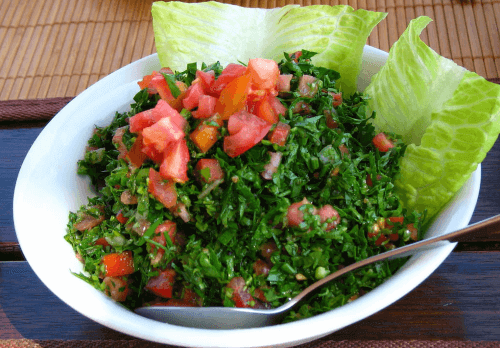
Byblos has a wonderful initiative called the ‘fridge of kindness’ to feed the hungry and homeless. They put all the left over food from the kitchen and buffet in a fridge that’s outside the front door. The fridge is kept there from noon till midnight every day, and anyone can reach in and take whatever food they want.
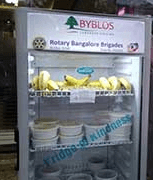
The restaurant is named after the city of Byblos in Lebanon, a beautiful and old city that is a UNESCO World Heritage site. It is one of the oldest continuously inhabited cities in the world, possibly from 5000 BC.
I overate (as usual), and walked out feeling happy because of the quality and quantity of food, and the reasonable bill.
Here’s a good way of dieting:

